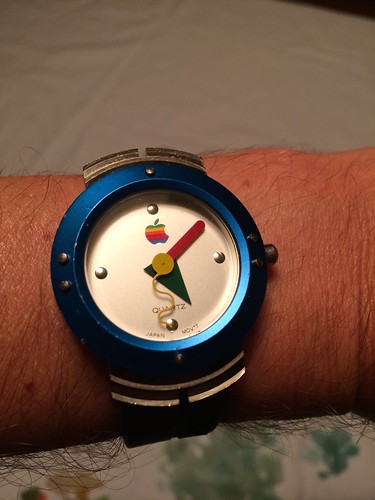As expected, Apple did it mostly right: a gorgeous high-quality design with plenty of personalization and rock-solid at its core time-keeping function. The first iPhone had brilliant, very clear positioning that helped excite people and make it easy to understand what was in fact a new product category. Broken into three easy-to-understand pieces, Steve Jobs announced it was (1) a widescreen iPod (2) great phone (3) the internet in your pocket. Apple's Watch message isn’t quite that simple (or, frankly for many people, compelling) but here it is:
- incredibly precise timepiece,
- immediate, intimate way to connect,
- intelligent health and fitness companion
The second message, an intimate way to connect, is the weakest piece of the story. I get the “intimate” part — it’s something you put on your wrist, it’s part of your daily appearance — but why do I want to “connect”? If it’s a Dick Tracy-style phone on my wrist (it has a built-in microphone and speaker, so it’s possible), why not just say that? The goofy “share a heart beat” with your friends sounds hard to get working, and few people will probably bother.
It will be nice to receive text updates on my wrist rather than having to pull my phone from my pocket, but I can’t see Maps being very important — certainly not enough to justify the time spent in the keynote demo. It’ll be nice to have the haptic feedback — a slight “buzz” when it’s time to turn corners — but for serious navigation wouldn’t I just want to use my phone? You’ll need your iPhone nearby to use the internet features like maps, so I just don’t understand the advantage of having it on my wrist.
But the third message — health and fitness — is immediately understandable and appealing. Apple’s new Activity app, with its easy-to-use three rings to show progress, and the Workout app for more serious exercising, look like the most well-thought and strongest features of the Watch. With sensors sensitive enough to tell when you’re walking up a stairs or rowing a boat, this will be one of the best wrist trackers ever.
That said, I have a few concerns. To get an accurate heart beat from the wrist, other wearables (e.g. Basis) rely on a tight fit (which would be uncomfortable after a while) or you have to explicitly request a reading by tapping a button — a real pain. Has Apple found a way to get real-time, continuous heart beat monitoring with a loose-fitting band? It’s not impossible, so if they’ve done that, I’m impressed.
Also, if you need to recharge it regularly (nightly?), then unfortunately you can’t track sleep. There are apparently no other new sensors — for example, I had been hoping for galvanic skin resistance, or maybe even skin temperature, so really this is about activity tracking and not much else.
For now. The important feature Apple brings to the wearables market is legitimacy as an accessory. Now that we have something that looks and feels good, packaged on a platform that’s extensible for new uses (bluetooth/wifi and NFC are built in), it’s finally possible to begin making great personal wearable apps.
We can go on and on about what’s missing from the Watch, but it’s nice, at last, to have a stake in the ground — something good enough to criticize, and build upon.

